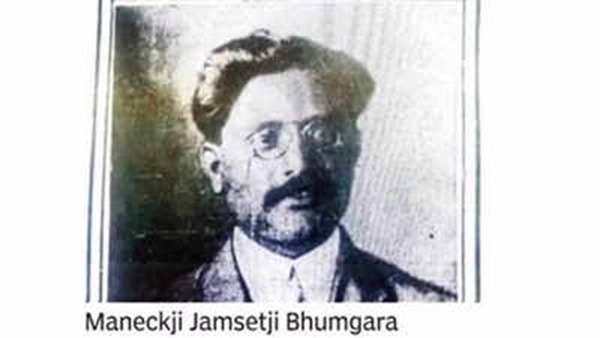Parsi cricketer MJ Bhumgara, a personal friend of KS Ranjitsinhji, was recognized as a proficient ‘twirler’ spinner in the cricketing world of early 20th century California.
Article by Avijit Ghosh | TNN
NEW DELHI: USA cricketers with an India connection have enjoyed a terrific run in the ongoing T20 World Cup. But not many know that in the early years of the 20th century, a Parsi cricketer from Surat was one of the most lethal spin bowlers in southern California. He was MJ Bhumgara, a rich businessman who became a star for the Los Angeles Cricket Club.
The city’s premier newspaper, The Los Angeles Times, wrote a glowing profile of the cricketer in its Sept 22, 1907 edition. Describing him as a proficient “twirler,” the article said that the “East Indian” also played in New York, St Louis, Portland and San Francisco. He was described as “popular and enthusiastic,” and “a personal friend of Ranjitsinghi (sic).”
Twirler is the word used for a spinner. Ranjitsinghi is a misspelt version of KS Ranjitsinhji, the all-time batting great who later became the ruler of the princely state of Nawanagar. The LA Times article statistically underlined Maneckji Jamsetji Bhumgara’s – that’s how LA Times spelt his name, elsewhere it is Jamshedji -effectiveness as a bowler. “In the first series of interleague matches, he captured 20 wickets at a cost of only 5.2 runs each. In the test (sic) matches against the strong Santa Monica eleven, this summer, his average works out at 5.5 runs for 11 wickets, both noteworthy performances.”
In a detailed account of the cricketer in online magazine Scroll in 2017, writer Anu Kumar said, “His recurring five-wicket hauls made him a match-winner, and he was, on occasion, handy with the bat as well.”
In his book, A Corner of a Foreign Field, which maps the social history of Indian cricket, Ramachandra Guha writes that the first Indians to play cricket were the Parsis of Bombay. About the year 1848, he writes, the Parsis founded their first club, the Oriental Cricket Club. At least 30 such clubs were founded by the community in the 1850s and 1860s.
Maneckji honed his game in Bombay’s Elphinstone Club and turned out for the Parsees and Fort High School teams. He was the grandson of Framjee Pestonjee Bhumgara, who ran a prosperous trading company. The website of V&A, the London-based museum, describes the company as traders in silverware, jewellery and ‘oriental’ products who displayed their wares in various European cities. It also says that Framjee managed to meet Queen Victoria at Windsor and was appointed as “a jeweler” to her court.
The Times of India reported on Oct 1, 1889, when British Prime Minister William Gladstone visited the department of French India at the Paris Exhibition, Framjee “presented Mr Gladstone with an address enclosed in an aristocratically chased silver casket, and begged Mrs Gladstone’s acceptance of a piece of richly-embroidered silk.” Ads published in The Times of India editions of the time show that his company also exported carpet and condiments to London.
Framjee also expanded his business to America, opening a New York Branch in 1894. Part of his grandfather’s operations, Maneckji would mix business with pleasure. “When Bhumgara & Co displayed their goods in exhibitions in American cities, such as at the St Louis World Fair in 1904, he would set up base as an art dealer – but also play cricket for the local clubs,” the website says.
Kumar also wrote, “(MJ) Bhumgara died in 1944, in Paris, aged 66.”

